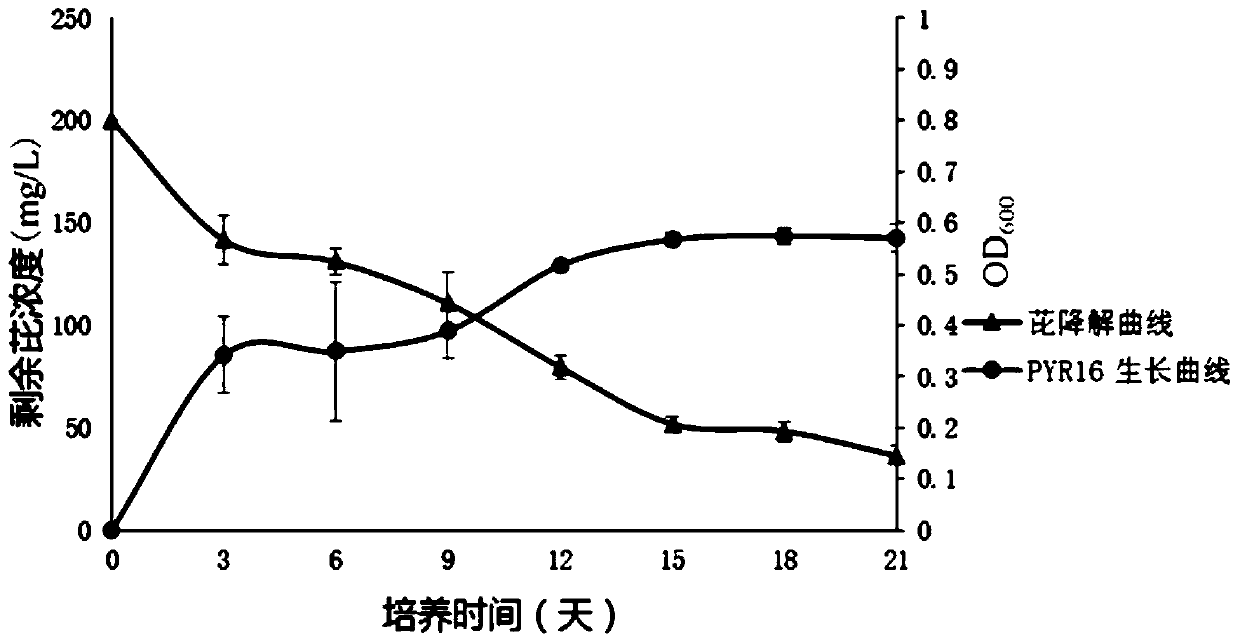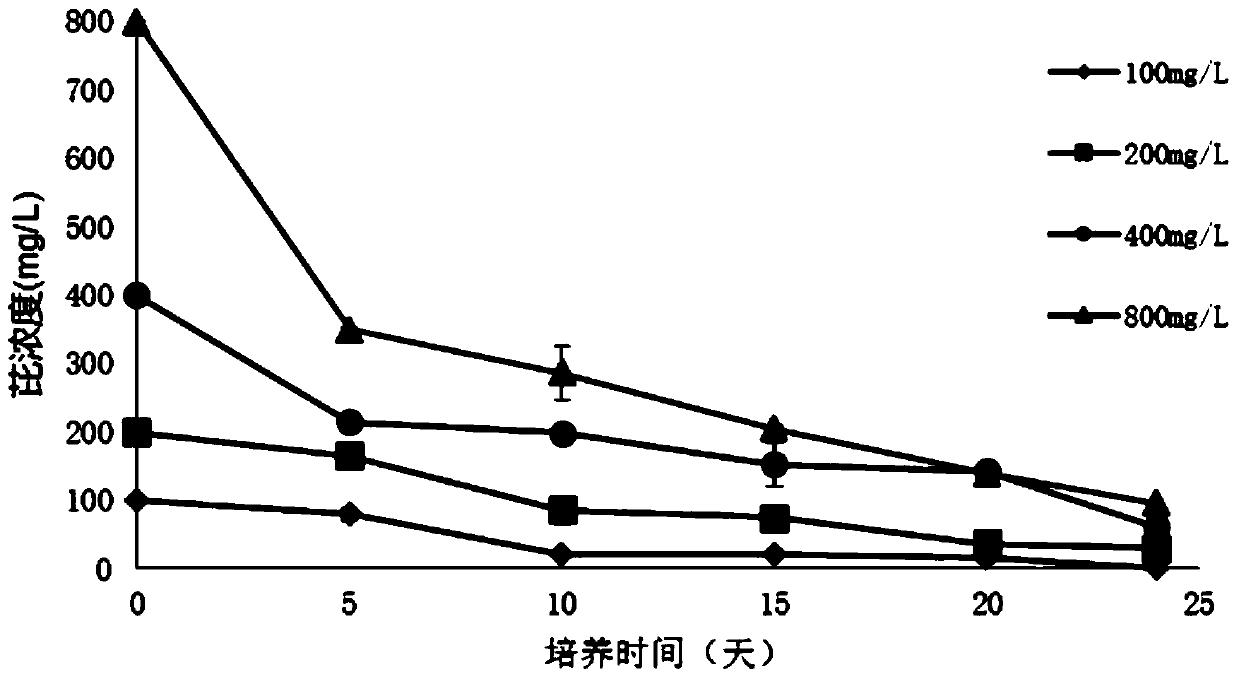A strain of Pantoea degrading polycyclic aromatic hydrocarbons organic pollutants
A technology for organic pollutants and polycyclic aromatic hydrocarbons, which is applied in the field of pantoea degrading polycyclic aromatic hydrocarbon organic pollutants and degrading polycyclic aromatic hydrocarbon organic pollutants. Complete and other problems to achieve the effect of wide temperature adaptability
- Summary
- Abstract
- Description
- Claims
- Application Information
AI Technical Summary
Problems solved by technology
Method used
Image
Examples
Embodiment 1
[0024] The isolation and identification of embodiment 1PYR16 bacterial strain
[0025] The long-term oil-contaminated soil from Changqing Oilfield was used as the screening soil. The specific screening scheme is as follows:
[0026] 1) Take 10g of soil, add it to the inorganic salt medium MSM containing 200mg / L pyrene, culture with shaking at 28°C for 15 days, and then receive the above-mentioned inorganic salt medium MSM containing 200mg / L pyrene with a 10% inoculation amount for cultivation Base center; transfer 5 times in a row.
[0027] 2) Take 0.1ml of the enriched culture solution obtained in step 1), spread it on the MSM solid plate containing pyrene, and after static culture at 28°C for 15 days, transfer the colony grown on the plate to the MSM solid plate containing pyrene On the plate, continue to grow until a single colony appears on the plate.
[0028] 3) Pick a single colony grown on a pyrene-containing MSM solid plate, inoculate it into an MSM liquid medium con...
Embodiment 2
[0032] Example 2 PYR16 bacterial strains to the degradation characteristics of pyrene
[0033] Using pyrene as the sole carbon source and using MSM medium as the base medium, the inventors tested the pyrene degradation ability of the PYR16 strain. First, the preserved strains were removed from -80°C and then inoculated into R 2 Activated in A solid medium for 1 day; pick a single colony and inoculate into 5 ml R 2 A liquid culture medium to OD 600 = 0.5; then take 0.5ml of bacterial liquid and inoculate into 25ml of MSM medium containing 200mg / L of pyrene, and culture with shaking at 28°C. In the above degradation system, the insertion amount of the PYR16 strain was about 10 5 -10 6 about. Take out a bottle of culture every 24 hours and measure the OD separately 600 value, and use acetone / n-hexane (1:1) to extract all residual pyrene in the Erlenmeyer flask, and then use GC-FID to analyze the pyrene content. Three bottles were taken each time for parallel analysis.
[00...
Embodiment 3
[0036] The influence of embodiment 3pH, sodium ion and temperature on pyrene degradation ability of PYR16 bacterial strain
[0037] First, the MSM medium was adjusted to a pH of 4, 5, 6, 7, 8, 9, 10 with hydrochloric acid or sodium hydroxide solution, and then inoculated according to the operation method of Example 2 for 10 5 -10 6 About the PYR16 strain, the concentration of residual pyrene in the culture system was analyzed after shaking culture at 28°C for 10 days. Such as image 3 As shown, in the pH range of 6-10, the PYR16 strain can maintain the degradation effect on pyrene, but when the pH is lower than 6, its degradation ability will be significantly inhibited. Therefore, the pH of the suitable treatment environment for the pyrene-degrading bacteria provided by the present invention should be adjusted to between 6-10, and when the pH of the treated sample is adjusted to 6-10, the PYR16 strain can maintain 34% of the pyrene substance. More than % degradation efficie...
PUM
 Login to View More
Login to View More Abstract
Description
Claims
Application Information
 Login to View More
Login to View More - R&D
- Intellectual Property
- Life Sciences
- Materials
- Tech Scout
- Unparalleled Data Quality
- Higher Quality Content
- 60% Fewer Hallucinations
Browse by: Latest US Patents, China's latest patents, Technical Efficacy Thesaurus, Application Domain, Technology Topic, Popular Technical Reports.
© 2025 PatSnap. All rights reserved.Legal|Privacy policy|Modern Slavery Act Transparency Statement|Sitemap|About US| Contact US: help@patsnap.com



